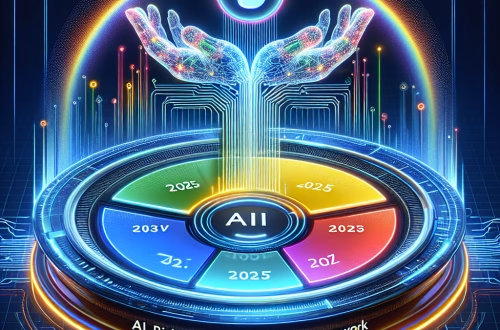AI Storytelling Apps Like ChatGPT
Summary:
AI storytelling apps like ChatGPT use generative language models to create interactive narratives, fictional worlds, and personalized stories. These apps empower users—from writers to educators—to generate plot ideas, draft characters, or co-create immersive tales through simple prompts. They matter because they democratize creativity, accelerate content production, and push the boundaries of human-AI collaboration. However, ethical concerns about originality and workforce impact accompany their rapid adoption. This article explores how these tools work, their optimal applications, and what novices should know before diving in.
What This Means for You:
- Lower Barrier to Creative Expression: AI storytelling apps let anyone craft stories without formal writing expertise. Start by experimenting with free platforms like ChatGPT; input simple prompts like “Generate a sci-fi story about a sentient robot” to understand their capabilities.
- Idea Generation & Productivity Boost: Use these apps to overcome writer’s block or outline drafts faster. For best results, refine prompts iteratively (e.g., “Add a plot twist involving betrayal”) instead of expecting flawless first outputs.
- Educational & Therapeutic Potential: Teachers can create customized reading exercises, while individuals might use storytelling apps for journaling or mental health reflection. Always review AI-generated content for appropriateness, especially with children.
- Future Outlook or Warning: As AI storytelling evolves, issues like copyright ambiguity, data privacy, and over-reliance on automation will intensify. Users should maintain human oversight and verify facts/logic in generated narratives.
Explained: AI Storytelling Apps Like ChatGPT
How AI Storytelling Apps Work
AI storytelling apps leverage Large Language Models (LLMs) like GPT-4, trained on vast text datasets to predict and generate coherent language. When a user inputs a prompt (e.g., “Write a fantasy prologue”), the model analyzes patterns from its training data—novels, screenplays, folklore—to assemble contextually relevant responses. Advanced apps layer this with fine-tuning for genres (horror, romance) or interactive features like branching narratives. Tools like Sudowrite or NovelAI add stylistic controls, letting users adjust tone, pacing, or character depth.
The Evolution of AI-Assisted Storytelling
Early text generators produced disjointed phrases, but modern apps create multi-chapter arcs with consistent lore. ChatGPT’s role-playing mode exemplifies this leap, enabling real-time dialogue where users can steer stories via choices (“Accept the duel” vs. “Run away”). Meanwhile, platforms like InferKit focus on short-form ideation, while Jasper targets marketing storytellers. This specialization reflects broader trends: AI isn’t replacing human creativity but augmenting it with rapid prototyping and infinite iteration.
Key Strengths
1. Speed & Scale: Draft a 500-word scene in seconds or explore 10 plot variants in minutes. • Predictability: Many apps default to clichés (e.g., “Chosen One” tropes) without user-guided constraints. 1. Brainstorming: Use ChatGPT to generate 10 novel premises before refining one manually. Emerging technologies like dynamic memory (where AI recalls past story events) and emotion-aware narratives could enable deeper immersion. However, watermarking AI content and ethical training-data sourcing will dominate industry discussions. Apps may also integrate multimedia, turning text prompts into storyboards or audio dramas. While AI storytelling apps offer unprecedented creative tools, experts caution against treating them as standalone authors. These models lack true understanding of narrative stakes or cultural context, risking biased or nonsensical outputs. Users should maintain editorial control and use AI as a collaborator, not a replacement. Transparency is also critical—disclosing AI assistance preserves trust in educational or published works. As regulation lags behind innovation, self-policing for ethical use becomes imperative.
2. Personalization: Generate stories tailored to niche interests (e.g., “Cyberpunk retelling of Romeo and Juliet”).
3. AccessibilityLimitations & Weaknesses
• Contextual Blind Spots: Stories might unintentionally plagiarize training-data sources or mishandle cultural nuances.
• Structural Gaps: AI struggles with long-term coherence—characters may change names or motives mid-story.Best Uses for Novices
2. Dialogue Practice: Simulate character conversations to test motivations.
3. Educational Tool: Have students critique AI-generated stories to hone analytical skills.
4. Hybrid Creation: Draft with AI, then rewrite key sections to inject personal voice.The Future of AI Storytelling
People Also Ask About:
Yes, but quality varies. Apps like ChatGPT can draft chapters, yet human editing remains crucial for plot consistency and emotional depth. For best results, use AI for scene drafts or idea expansion rather than end-to-end creation.
Ownership policies differ per platform. OpenAI’s terms grant users rights to ChatGPT outputs, but some services claim partial ownership. Always review terms of service before commercializing AI-generated content.
Copyright offices in the US and EU often reject AI-only works, citing lack of human authorship. To protect stories, significantly modify AI drafts and document your creative input.
Use “negative prompts” (e.g., “Exclude magical prophecies”) and seed prompts with specific details (“A chef in 22nd-century Tokyo discovers…”). Iterative prompting yields more original content than single queries.Expert Opinion:
Extra Information:
Related Key Terms:
- Best AI storytelling app for beginners
- How to improve storytelling with ChatGPT prompts
- Free AI story generator no sign up
- Ethical AI writing assistant for authors
- Interactive fantasy RPG ChatGPT template
- Copyright rules for AI-generated stories
- AI storytelling workshop techniques 2024
Check out our AI Model Comparison Tool here: AI Model Comparison Tool
#storytelling #apps #ChatGPT
*Featured image provided by Pixabay




